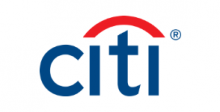Report Summary
A new and robust wealth segment has appeared on the global economic scene with little fanfare. These are the New Wealth Builders (NWBs) - households with financial assets of $100,000 to $2 million.
As self-made professionals, corporate executives, and entrepreneurs, New Wealth Builders defy stereotypes. They make progress through hard work and philanthropy and they embody the positive aspects of globalization. As global prosperity unfolds in new regions and populations, they are projected to be an important engine of growth.
To obtain unique insight into this segment, the Economist Intelligence Unit (EIU) conducted a research programme, sponsored by Citi, to determine the size of the New Wealth Builder market and forecast its growth across 32 countries. Additionally, a global survey was conducted to find out more about their lifestyles, beliefs and core values, while gleaning insights related to their sources of financial counsel and investing habits.
Research Methodology
Survey
In February 2014, The Economist Intelligence Unit (EIU) carried out a global survey to learn about New Wealth Builders (NWBs) with investible assets between US$100,000 and $2 million (excluding personal residences). The survey, sponsored by Citi, reached 1,552 individuals who meet NWB criteria in 30 countries across 18 industries. Survey responses reveal characteristics, lifestyles, and investment choices by the global NWB segment. In-depth interviews with NWBs and financial services executives that engage with this wealth class supplement the survey data.
Forecasts
In 2014 and early 2015, the EIU projected sizes of NWB segments in 32 countries across the globe by estimating the number of households within specific asset bands using a two-step procedure. Step one calculates total household financial assets within a country. Step two developed a Lorenz curve to measure the distribution of financial assets in each county. All forecasts reflect conditions in February 2014 with the exception of Russia, which, due to changes in its market fundamentals, was revised in February 2015.
The EIU Global New Wealth Builder Scorecard
This novel benchmark ranks countries and regions in the pivotal race to nurture New Wealth Builders. Winners and losers stand out, inviting investigation into reasons for good or poor performance. The Scorecard ranks countries according to projections of NWB household compound annual growth rates from 2014 to 2020. In projected average growth of NWB households through 2020, India (47%) leads, followed by Indonesia (41%), Vietnam (35%), and Thailand (24%). At the low end of the scale are Singapore (-0.3%) and Argentina (-0.8%). The US occupies 27th place (2%), below Spain but above the UK.






